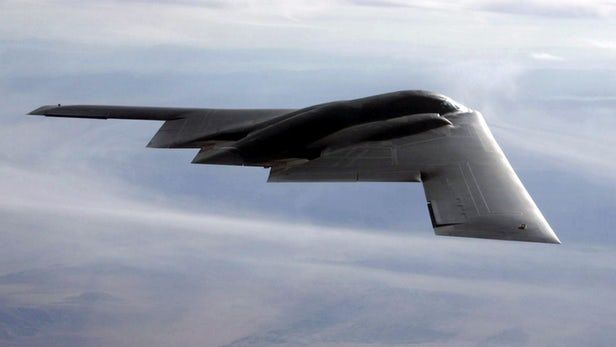They’re ready to handle everything from satellite defense to extraterrestrial attacks.
Category: military
For one thing, it appears to violate international law, according to Congressional testimony by Joanne Gabrynowicz, a space law expert at the University of Mississippi. Before NASA’s moon landing, the United States—along with other United Nations Security Council members and many other countries—signed the 1967 Outer Space Treaty. “Outer space, including the moon and other celestial bodies,” it states, “is not subject to national appropriation by claim of sovereignty, by means of use or occupation, or by any other means.” The 1979 Moon Agreement went further, declaring outer space to be the “common heritage of mankind” and explicitly forbidding any state or organization from annexing (non-Earth) natural resources in the solar system.
Major space-faring nations are not among the 16 countries party to the treaty, but they should arguably come to some equitable agreement, since international competition over natural resources in space may very well transform into conflict. Take platinum-group metals. Mining companies have found about 100,000 metric tons of the stuff in deposits worldwide, mostly in South Africa and Russia, amounting to $10 billion worth of production per year, according to the U.S. Geological Survey. These supplies should last several decades if demand for them doesn’t rise dramatically. (According to Bloomberg, supply for platinum-group metals is constrained while demand is increasing.)
Palladium, for example, valued for its conductive properties and chemical stability, is used in hundreds of millions of electronic devices sold annually for electrodes and connector platings, but it’s relatively scarce on Earth. A single giant, platinum-rich asteroid could contain as much platinum-group metals as all reserves on Earth, the Google-backed Planetary Resources claims. That’s a massive bounty. As Planetary Resources and other U.S. and foreign companies scramble for control over these valuable space minerals, competing “land grabs” by armed satellites may come next. Platinum-group metals in space may serve the same role as oil has on Earth, threatening to extend geopolitical struggles into astropolitical ones, something Trump is keen on preparing for. Yesterday he said he’s seriously weighing the idea of a “Space Force” military branch.
ALON — Transparent Aluminum — is a ceramic composed of Aluminium, Oxygen and Nitrogen. Transparent Aluminum, was once pure science fiction, a technical term used in a Star Trek Movie from the 80’s.
In the movie Star Trek 4 The Voyage Home, Captain Kirk and his team, go back in time to acquire 2 whales from the past and transport them back to the future. Scotty needed some materials to make a holding tank for whales on his ship, but had no money to pay for the materials.
So Scotty uses his knowledge of 23 third century technology and the manufacturers computer and programs in, how to make the Transparent Aluminum Molecule.
Transparent Aluminum or Aluminum Oxynitride, also known as ALON, is much stronger than Standard Glass and over time will become cheaper to make, but until then will most likely be used for NASA & the Military.
Thanks for watching
____________________________________________________________________
Tired of writing your own boring code for new software? Finally, there’s an AI that can do it for you.
BAYOU is an deep learning tool that basically works like a search engine for coding: tell it what sort of program you want to create with a couple of keywords, and it will spit out java code that will do what you’re looking for, based on its best guess.
The tool was developed by a team of computer scientists from Rice University who received funding both from the military and Google. In a study published earlier this month on the preprint server arXiv, they describe how they built BAYOU and what sorts of problems it can help programmers solve.
Stealth technology may not be very stealthy in the future thanks to a US$2.7-million project by the Canadian Department of National Defence to develop a new quantum radar system. The project, led by Jonathan Baugh at the University of Waterloo’s Institute for Quantum Computing (IQC), uses the phenomenon of quantum entanglement to eliminate heavy background noise, thereby defeating stealth anti-radar technologies to detect incoming aircraft and missiles with much greater accuracy.
Ever since the development of modern camouflage during the First World War, the military forces of major powers have been in a continual arms race between more advanced sensors and more effective stealth technologies. Using composite materials, novel geometries that limit microwave reflections, and special radar-absorbing paints, modern stealth aircraft have been able to reduce their radar profiles to that of a small bird – if they can be seen at all.
Photo: General Atomics
General Atomics has been awarded a contract to develop electromagnetic railgun technology for the Army as the service pursues cutting-edge weapons to take on advanced adversaries.
The Army’s growing interest in this capability comes after years of research by the Navy, which has yet to field one of the weapons.
The Israel-linked killing of Fadi al-Batsh in Malaysia shows that drone technology is now dangerous enough to kill for
Posted in drones, encryption, military, robotics/AI | Leave a Comment on The Israel-linked killing of Fadi al-Batsh in Malaysia shows that drone technology is now dangerous enough to kill for
There are certain classes of technology that, by their nature, put those who possess their secrets in danger: Nuclear weapons. Ballistic missiles. Advanced encryption software.
Now, add unmanned aerial vehicles—drones—to that list.
A Palestinian electrical engineer who had published research on drones was assassinated in Malaysia, the Wall Street Journal reported (paywall). A helmeted person on a motorcycle fired 10 shots at 35 year-old Fadi al-Batsh, killing him as he walked to a mosque for morning prayers.









